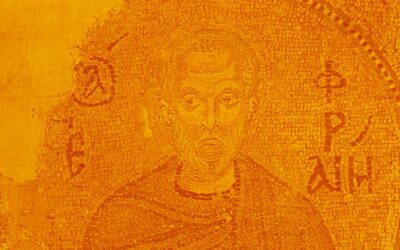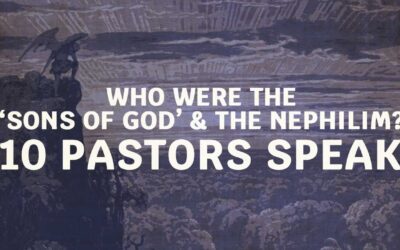Genesis is one of the most influential books in history. Its stories are still widely known and retold by our modern culture.
One such story continues to fascinate and puzzle us.
Right before the tale of Noah’s Ark are four verses that get comparatively little attention – the story of an intermingling of the ‘sons of God’ and the ‘daughters of men’, and the rise of mighty men whose deeds were being retold when the author wrote about them.
The Story of the Nephilim in Genesis 6:1-4
When man began to multiply on the face of the land and daughters were born to them, the sons of God saw that the daughters of man were attractive. And they took as their wives any they chose.
Then the Lord said, “My Spirit shall not abide in man forever, for he is flesh: his days shall be 120 years.”
The Nephilim were on the earth in those days, and also afterward, when the sons of God came in to the daughters of man and they bore children to them.
These were the mighty men who were of old, the men of renown.
Genesis 6:1-4
Why Doesn’t Genesis Say More About the Giants?
The author doesn’t elaborate further with details that later books describe in much more detail (1 Enoch, Jubilees, etc).
His purpose seems to be to help his readers understand who these legendary men ‘of old’ originally were (the origin and exact meaning of the word Nephilim is still debated), despite what the legends about them might claim.
Who were these ‘sons of God’?
The author doesn’t seem to deem it necessary to further identify them, instead simply contrasting these sons with the daughters of mankind.
The oldest interpretation of the identity of the sons of God by Jewish and Christian theologians and historians was that they were ‘angels of God’.
A version of the Septuagint translation even translated the phrase as ‘angels’ directly into Greek.
The Source of Pagan Mythologies?
Josephus expands on the idea that it was the Nephilim that inspired the giant myths of the Greeks – “for the tradition is, that these men did what resembled the acts of those whom the Grecians call giants.”
This view makes sense in light of the fact that the myths of other cultures told many tales of the intermingling of supernatural beings with earthly women resulting in demigods – a foundational idea in many of the earliest myths. If these stories all have a common origin, then this interpretation explains the overlap between them.
A Different View Arises
Around the time of Christ, some Jewish rabbis began to challenge this view, taking the ‘sons of God’ as meaning godly men from the line of Seth, or kings. But the early church fathers largely all maintained the angels view until Augustine’s dismissal of the idea around 400 AD.
Following that, the angels view fell out of fashion, usually replaced with the Sethites view, although there are some medieval outliers.
Modern Commentators on Genesis 6
Modern commentators are split on whether the writer meant angels or something else, with conservatives such as John MacArthur and Al Mohler arguing that the text can only be describing a forbidden and sinful intermingling of spiritual beings with humanity in some way.
And modern retellings and interest in ancient demigod myths, and even the idea that aliens visited our earth in ages past, have helped to fan renewed interest in the meaning and implications of this passage.
Nephilim are now featured prominently in teen fiction almost as often as werewolves and vampires, and so this story refuses to die, instead interweaving itself into modern myth.
This is why this site exists – to help us understand the story, its history of interpretation, and with that knowledge, better assess it for ourselves.






